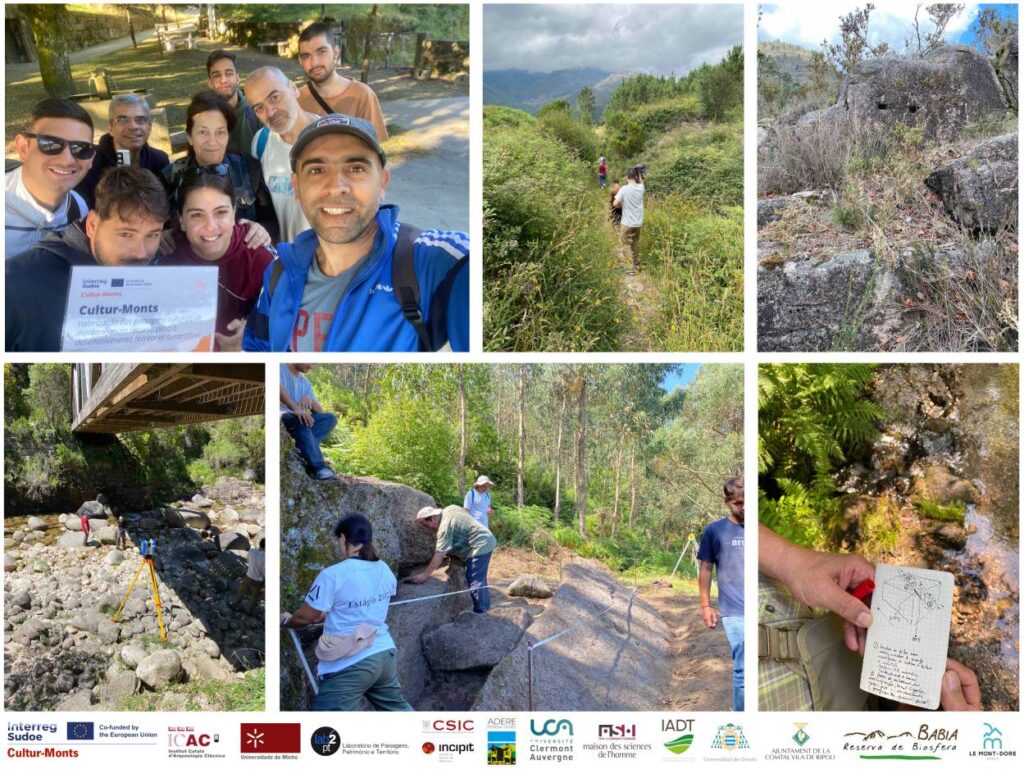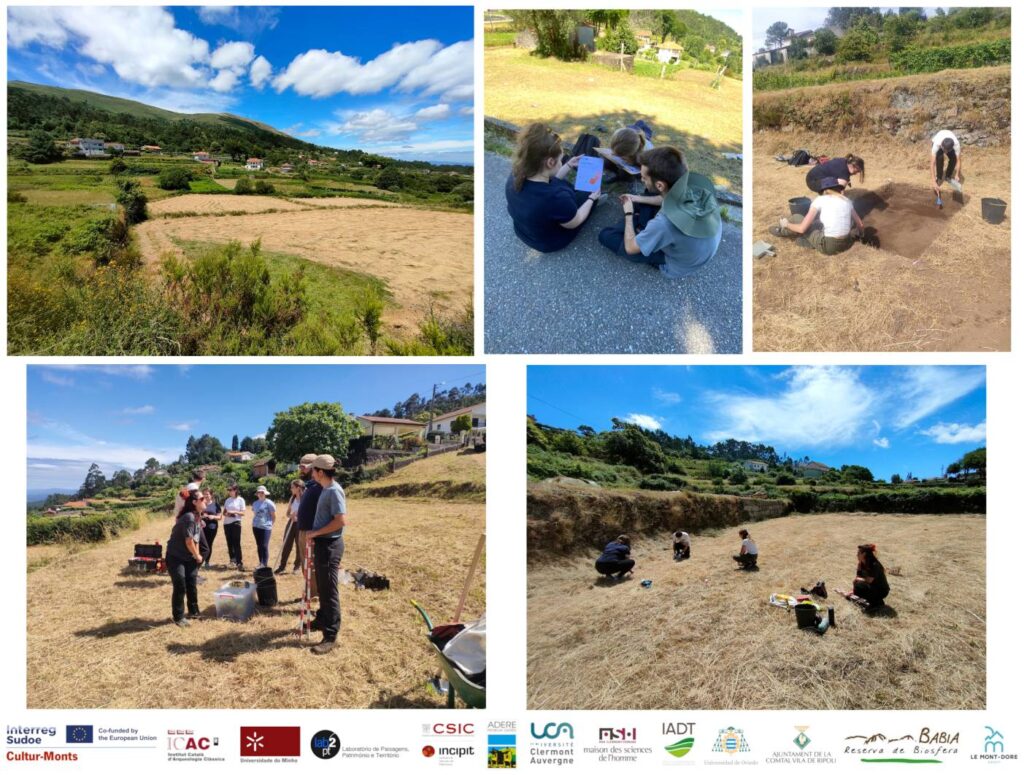News
Cultur-Monts | New archaeological campaign in the Roman Geira and the agropastoral landscape of Extremo
June 16 to July 11, 2025 | Terras de Bouro and Arcos de Valdevez
Published on
Starting next Monday, June 16, until July 11, the Lab2PT team of Interreg SUDOE “Cultur-Monts” returns to the field to carry out two archaeological campaigns in the two sub-windows of the project – Terras de Bouro and Arcos de Valdevez.
In addition to being aligned with the objectives of Cultur-Monts, which aims to study, disseminate and promote the archaeological and heritage resources of mountainous areas, the work to be developed is also part of the PIPA projects “BracaViae – Road Landscapes: The Roman Geira in Serra do Gerês” (Terras de Bouro) and PIPA “FrontierA-S” Border landscapes and contemporary societies. Living with a fortified heritage (Extremo – Arcos de Valdevez)”.
They are also linked to the RURARQ project (IR David González-Álvarez), developed by INCIPIT – CSIC, which focuses, among other areas of study, on the agrarian landscape of Extremo.
As in 2024, the interventions will be carried out as part of the field internships of the Bachelor’s and Master’s degrees in Archaeology at the University of Minho and the results obtained will contribute directly to the project.
A first team, led by Helena Carvalho, and co-directed by Paulo Bernardes and Jorge Ribeiro, will develop a campaign in the municipality of Terras de Bouro guided by three major objectives: the systematic prospecting of the route of the Roman Geira; the archaeological, geological and photogrammetric survey of a set of quarries associated with the route; and the epigraphic study of some of its milestones. These works will also include the participation of Francisco Azevedo Mendes, also a member of Cultur-Monts, who will conduct the survey and systematization of archival documentation, tasks that meet the objectives of the two projects mentioned above.
A second team, led by Rebeca Blanco-Rotea, will intervene in Arcos de Valdevez, in the agropastoral landscape area of Extremo, aiming to respond to the following purposes: superficial prospecting of the spaces with terraces, in order to define the elements that configure the agrarian landscape; prospecting with Georadar and magnetometer in the fields of Extremo and Cancela, which will still be subject to surveys; and collection of samples for carpological analysis of the seeds and dating of the terraces.
The two interventions will count on the contribution of the two Cultur-Monts scholarship holders, João Vinicius Back and Eduardo Alves, of the RURARQ project technicians Veja Arribas and Roberto García, and of thirteen students of the above-mentioned courses, as part of the consolidation of their teaching-learning process, in field practices, benefiting from the logistical support of the Archaeology Unit of the University of Minho, but also of the Municipal Councils of Terras de Bouro and Arcos de Valdevez, as well as the Parish Council of Portela-Extremo.

Figure 1: perspective of the work carried out in Geira Romana – Terras de Bouro.

Figure 2: perspective of the work carried out in the parish of Extremo – Arcos de Valdevez.
Coordination:
Terras de Bouro:
Scientific direction: Helena Paula Carvalho (Lab2PT, UMinho);
Co-supervision: Paulo Bernardes (UAUM/ Lab2PT, UMinho), Jorge Ribeiro (Lab2PT, UMinho), Francisco Azevedo Mendes (Lab2PT, UMinho).
Arcos de Valdevez:
Scientific direction: Rebeca Blanco-Rotea (Lab2PT, UMinho)
More information:
Facebook: Cultur-Monts Sudoe
Instagram: CulturMonts Interreg Sudoe
Linkedin: CulturMonts Interreg Sudoe